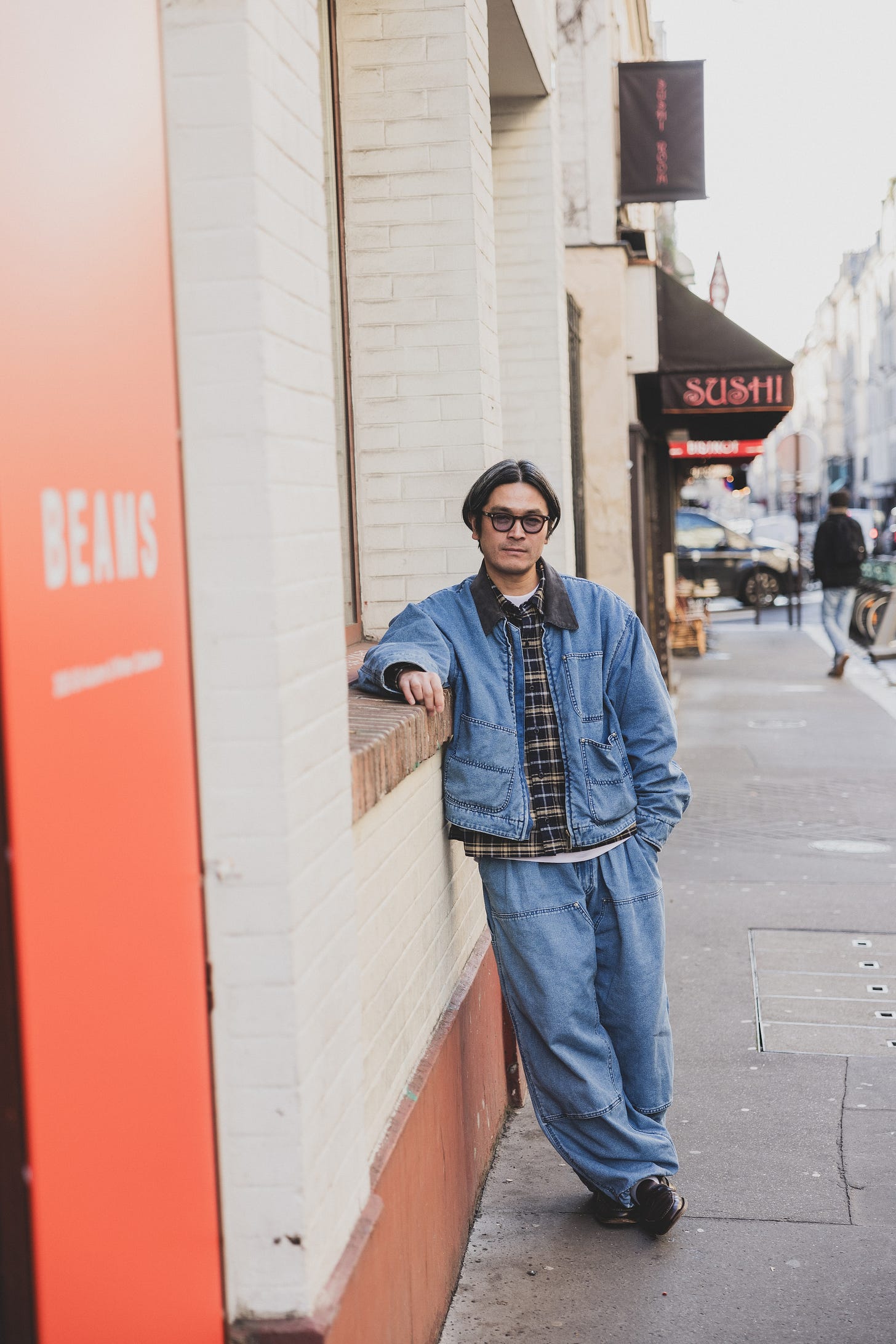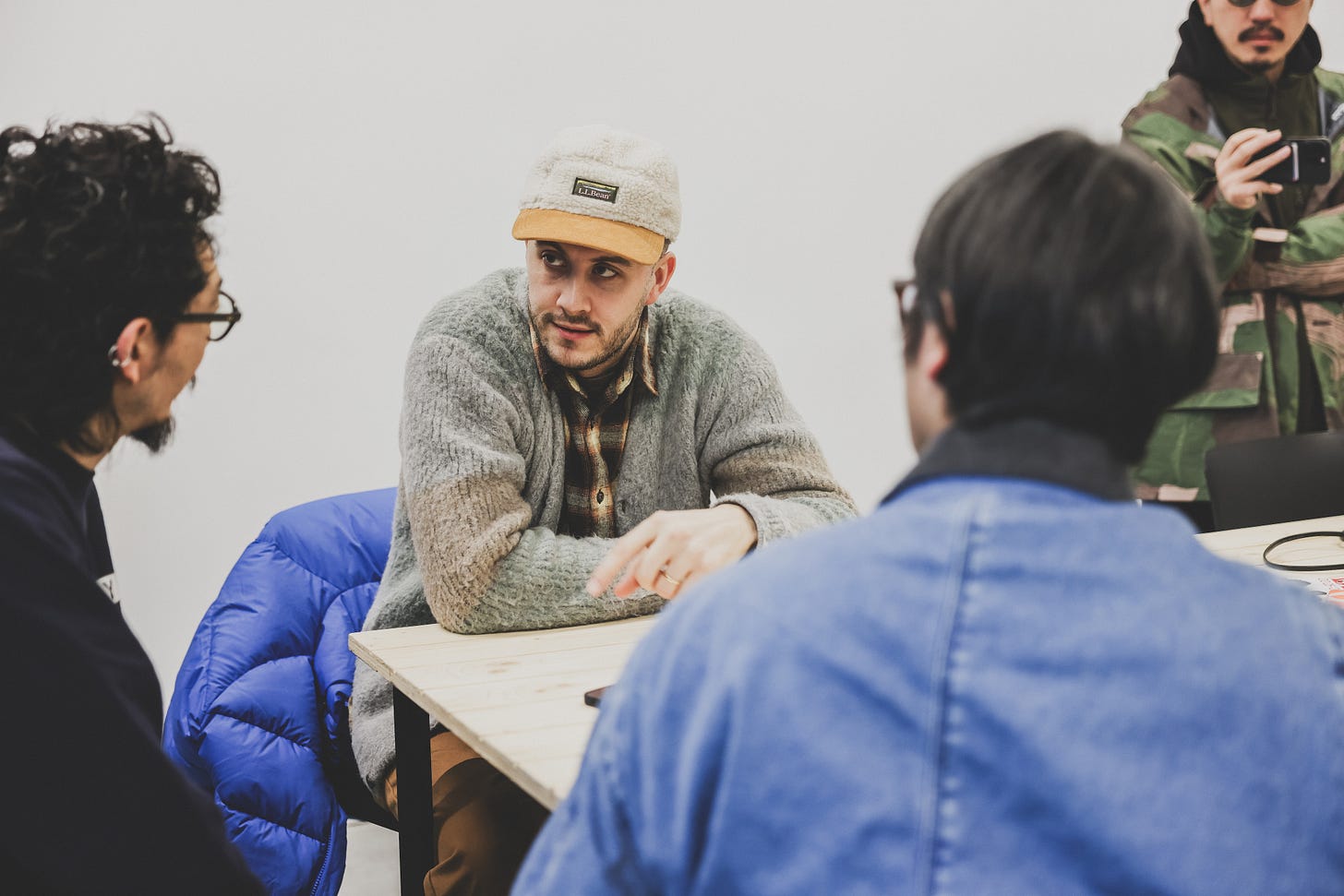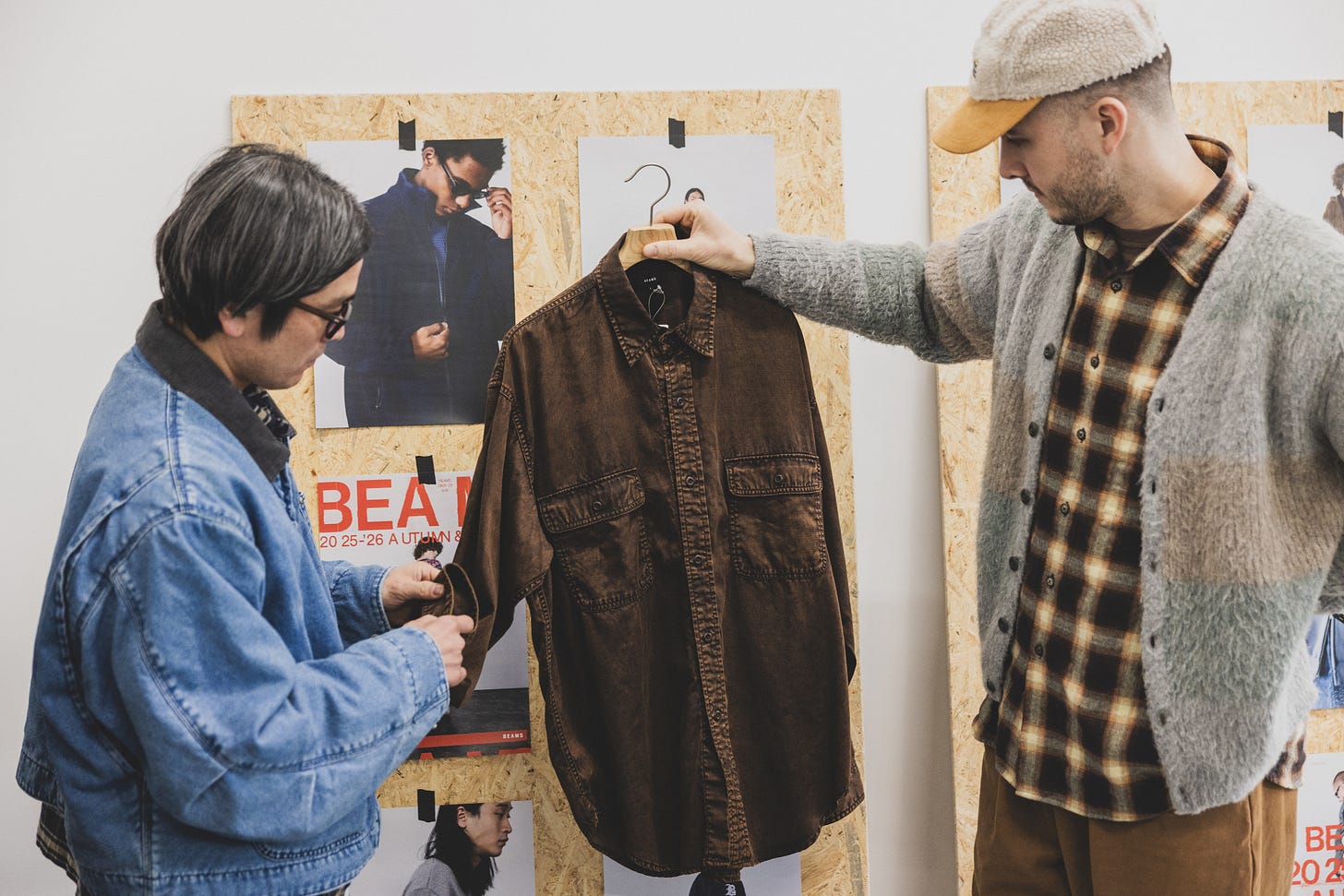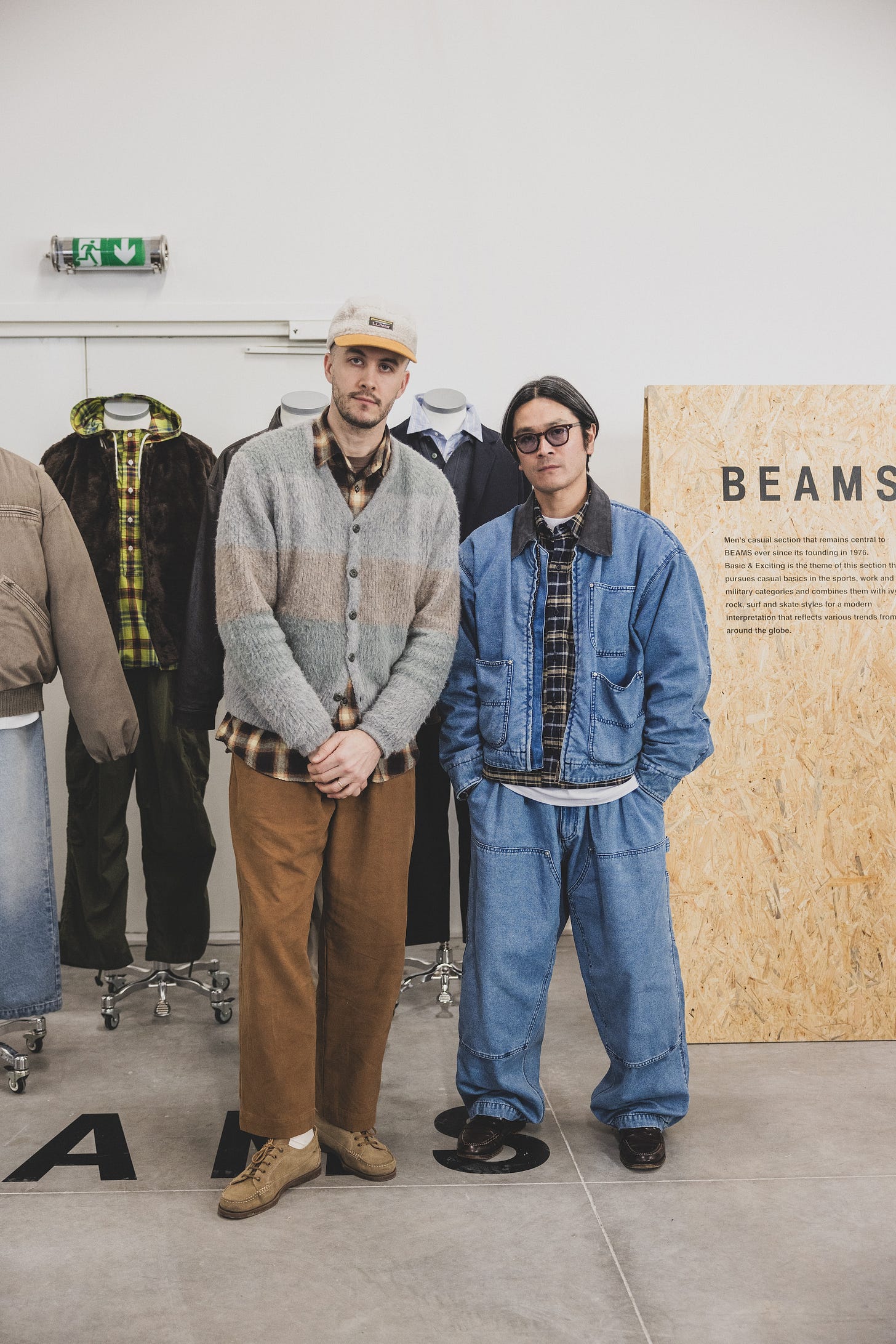Exploring BEAMS of Japan
An interview with Motoki Yoshikawa, Creative Director of BEAMS Men's Casual, about personal style, underground culture, and heritage of BEAMS.
BEAMS.
It's more than just another retail chain in a city that treats shopping like a religion – it's where Japan's obsession with American style crystallized into something entirely its own.
But dig deeper, past the pristine store windows and meticulously folded Oxford shirts, and you'll find something raw and real.
While I was in Paris last month, I sat down with Motoki Yoshikawa, Creative Director of BEAMS Men's Casual. As someone who cut his teeth in the electric atmosphere of 90s Harajuku and rose through the ranks from shop staff to creative director, Motoki represents a bridge between BEAMS' heritage and its future.
Our conversation wandered from Manchester's rave scene to the art of mixing vintage with contemporary style, touching on everything that makes Japanese fashion interpretation so compelling.
What emerged was a portrait of a brand deeply rooted in tradition and constantly pushing forward — much like Tokyo itself.
Here's our chat, edited for clarity and flow.
Your journey with BEAMS spans 25 years. How have the 90s and Tokyo’s fashion culture influenced your creative direction today?
The 90s were fundamental in shaping my perspective. I was a high school student then, wholly immersed in Tokyo's fashion scene. It was an era defined by the emergence of Urahara style and vintage fashion.
Similar to figures like Jun Takahashi of Undercover or NIGO, I was drawn to this culture of mixing different influences – from bike culture to vintage fashion. That period remains my creative backbone.
For those unfamiliar with BEAMS' different lines, could you explain what differentiates BEAMS Men's Casual from other collections like BEAMS Plus?
BEAMS Men's Casual, which started in 1976, operates under the motto "basic and exciting." We take fundamental American cultural styles – jeans, shirts, classic pieces – and interpret them through the lens of current trends, whether that's oversizing or street culture elements.
This makes us quite different from BEAMS Plus, which maintains a more consistent focus on 1945-60s era clothing.
We're more fluid, adapting day by day to reflect current movements in fashion.
How do you balance seasonal trends with timeless design? There seems to be both an appreciation for specific eras, like 90s fashion and music, alongside more classic approaches.
It's about staying connected to what's happening in real-time. I constantly observe street fashion in cities like London and New York. If I sense the global trend is moving toward basics, our collection might lean more classical.
If street style is becoming more experimental, we'll push in that direction. It's a responsive approach rather than adhering to a fixed formula.
Many associate Japanese fashion with its interpretation of American vintage and prep style, but there's also a strong connection to 90s culture and rock music that's less discussed. How do you see these different influences playing out?
Right now, we're seeing a shift. The past couple of years were dominated by Y2K-inspired tech and sporty styles, similar to what we saw around 2019.
Fashion moves in cycles – after periods of technical, futuristic design, we often see a return to basics or prep style. That's why we're currently focusing more on vintage and craftsman-inspired pieces.
In an era where everything seems accessible online, how do you discover authentic subcultures and new inspiration?
I don't have specific stores or locations I always visit – instead, I seek out communities and underground scenes. I'm particularly drawn to smaller groups doing interesting things beneath the mainstream radar. While social media has made street style instantly accessible, nothing replaces the experience of being physically present in these spaces.
Take my recent trip to Manchester, for example. While it might not have London's scale, Manchester has this incredible energy, particularly in its music and fashion underground. The city's rave culture heritage particularly interests me – it's a perfect example of how music, fashion, and community intersect.
You can feel a certain creative electricity there that you'd never fully grasp through Instagram or TikTok.
What's fascinating about visiting these places in person is how you discover connections that aren't visible online. You might find a small showroom run by young collectors preserving rare pieces from the 90s, or stumble upon a new brand that hasn't yet reached social media.
These authentic cultural moments – they're still happening, they're just harder to find now. That's why physical exploration remains crucial to my creative process.
How do you maintain BEAMS' identity in today's saturated market?
It comes down to understanding fashion history. The styles of the 90s were reinterpretations of the 70s, and this cyclical nature continues.
My approach combines deep knowledge of fashion history with awareness of current trends. It's about mixing that historical understanding with future-facing elements to create something distinctive.
Looking ahead, what are your ambitions for BEAMS Men's Casual globally?
We're still relatively new outside Japan, with just three seasons and about ten international accounts. But our foundation is in American casual wear, so expanding into the U.S. market, particularly New York and Los Angeles, is a natural progression.
Our company motto is "Japan Echo BEAMS" – we want people worldwide to know BEAMS not just as a Japanese interpretation of American style, but as a reason to visit Japan and experience our stores firsthand. It's ambitious, but we see BEAMS becoming as synonymous with Japan as Mount Fuji or Kyoto.
This interview has been edited and condensed for clarity.






